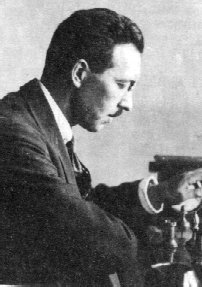Grigory Levenfish
| Grigory Levenfish | |
|---|---|
 | |
| Full name | Grigory Yakovlevich Levenfish |
| Country | Russian Empire → Soviet Union |
| Born | 19 March 1889 Piotrków, Congress Poland, Russian Empire |
| Died | 9 February 1961 (aged 71) Moscow, Soviet Union |
| Title | Grandmaster (1950) |
Grigory Yakovlevich Levenfish (Russian: Григо́рий Я́ковлевич Левенфи́ш; 19 March 1889 [O.S. 7 March] – 9 February 1961) was a Soviet chess player who scored his peak competitive results in the 1920s and 1930s. He was twice Soviet champion, in 1934 (jointly with Ilya Rabinovich) and 1937. In 1937 he drew a match against future world champion Mikhail Botvinnik. In 1950 Levenfish was among the first recipients of the title of Grandmaster, awarded by FIDE that year for the first time.
Early life and education
Levenfish was born in
Early chess achievements
His earliest recognition as a prominent chess player came when he won the St. Petersburg championship of 1909, and played in the strong Carlsbad tournament of 1911, where he scored 11½ points from 25 games. At age 22, this was to be his first and last tournament outside Russia or the Soviet Union. His play at the time was compared to that of Mikhail Chigorin.[citation needed] In the next decade, he won the Leningrad Championships of 1922, 1924, and 1925 (jointly).
Soviet Championship
At a national level, he finished on the podium at the Soviet Championship on four occasions; third in 1920, second in 1923, co-champion at Leningrad in 1934 (tied with Ilya Rabinovich at 12/19), and outright champion at Tbilisi in 1937 with a score of 12½/19 points.

In the Moscow International tournament of 1935, he scored 10½/19 points to tie for 6th–7th places, as Mikhail Botvinnik and Salo Flohr won. In a Soviet-only tournament at Leningrad 1936, he was third with 8½/14. Participation in the Leningrad–Moscow training tournament of 1939 resulted in a shared 3rd–6th-place finish, with a score of 10/17, behind winner Flohr and Samuel Reshevsky.[2]
In match play, he drew with Botvinnik in 1937 over 13 games, and beat Vladimir Alatortsev in 1940.
Lack of support and recognition
Despite his successes, Levenfish was virtually ignored by the Soviet chess authorities, who gave their full blessing to the young rising star and committed communist Botvinnik. He was the only strong Soviet master of his generation who was denied a
Levenfish was awarded the title of International Grandmaster by FIDE, the world chess federation, in 1950, the year the title was introduced officially.
Legacy
| a | b | c | d | e | f | g | h | ||
| 8 |  | 8 | |||||||
| 7 | 7 | ||||||||
| 6 | 6 | ||||||||
| 5 | 5 | ||||||||
| 4 | 4 | ||||||||
| 3 | 3 | ||||||||
| 2 | 2 | ||||||||
| 1 | 1 | ||||||||
| a | b | c | d | e | f | g | h | ||
In his time, Levenfish also wrote books for beginners and edited a collaborative effort on chess openings, titled Sovremenny debyut ("Modern openings"). His posthumously published autobiography, Izbrannye partii i vospominaniya (1967), contained 79 annotated games.
Regarding his playing abilities, Sosonko points to his deep understanding of the game and a keen eye for brilliantly imaginative moves. He was also an opening theorist; the Levenfish Attack, a variation of the Sicilian Defence, is named after him.
Playing style
Levenfish defeated virtually all of the top Russian and Soviet players from the 1910s to the early 1950s, and beat world champions
Books
- Izbrannye partii i vospominaniya, by Grigory Levenfish, 1967. In Russian. Translated into English by Douglas Griffin and published by Quality Chess under the title Soviet Outcast in 2019. ISBN 9781784830861.
- Rook Endings, by Grigory Levenfish and Vasily Smyslov. Translated by Philip J. Booth, 1971, Batsford. ISBN 0-7134-0449-3.
- Sovremenny debyut, edited by Grigory Levenfish, 1940. In Russian.
See also
References
- ^ Kentler, A. (2002). "Тот самый Левенфиш". Шахматный Петербург (in Russian). Vol. 2, no. 24. Retrieved 2020-09-08 – via e3e5.com (2011-02-10).
- ^ Event Details: Leningrad/Moscow, 1939, Chessmetrics.com
Bibliography
- ISBN 0-19-280049-3.
- Sosonko, Genna (2005). Russian Silhouettes. New In Chess. ISBN 90-5691-078-7.
- ISBN 0-7091-1030-8.
External links
- Grigory Levenfish player profile and games at Chessgames.com
